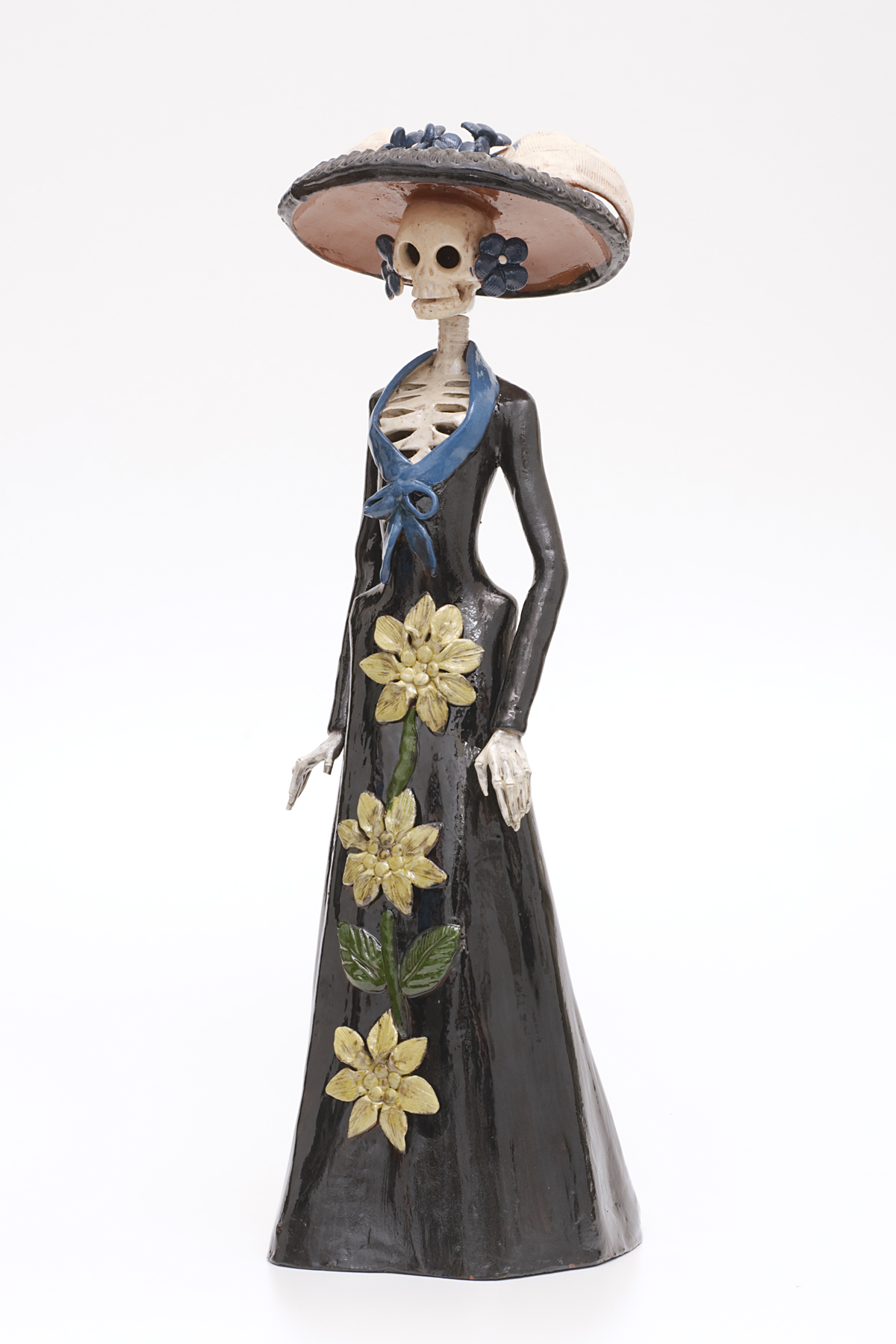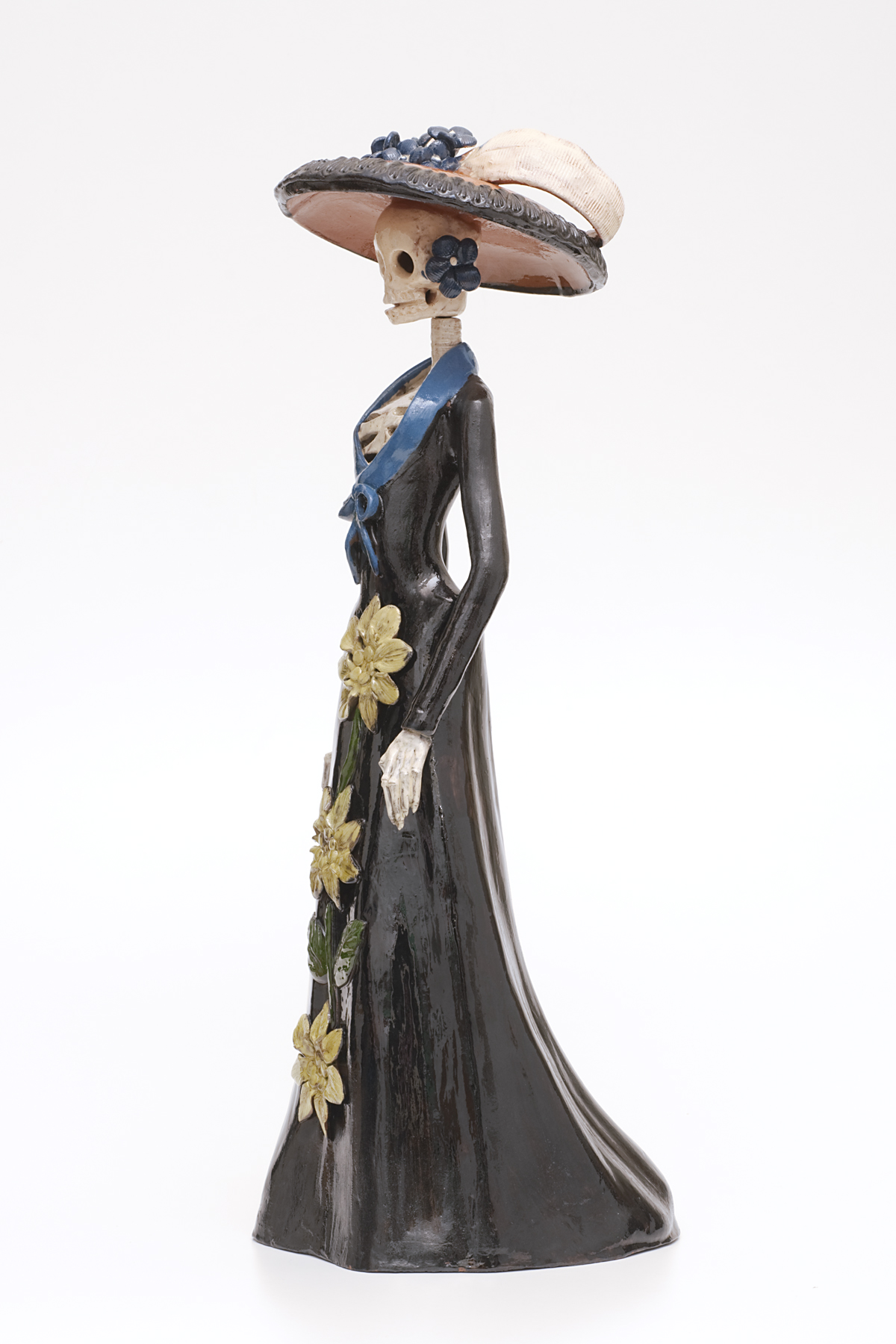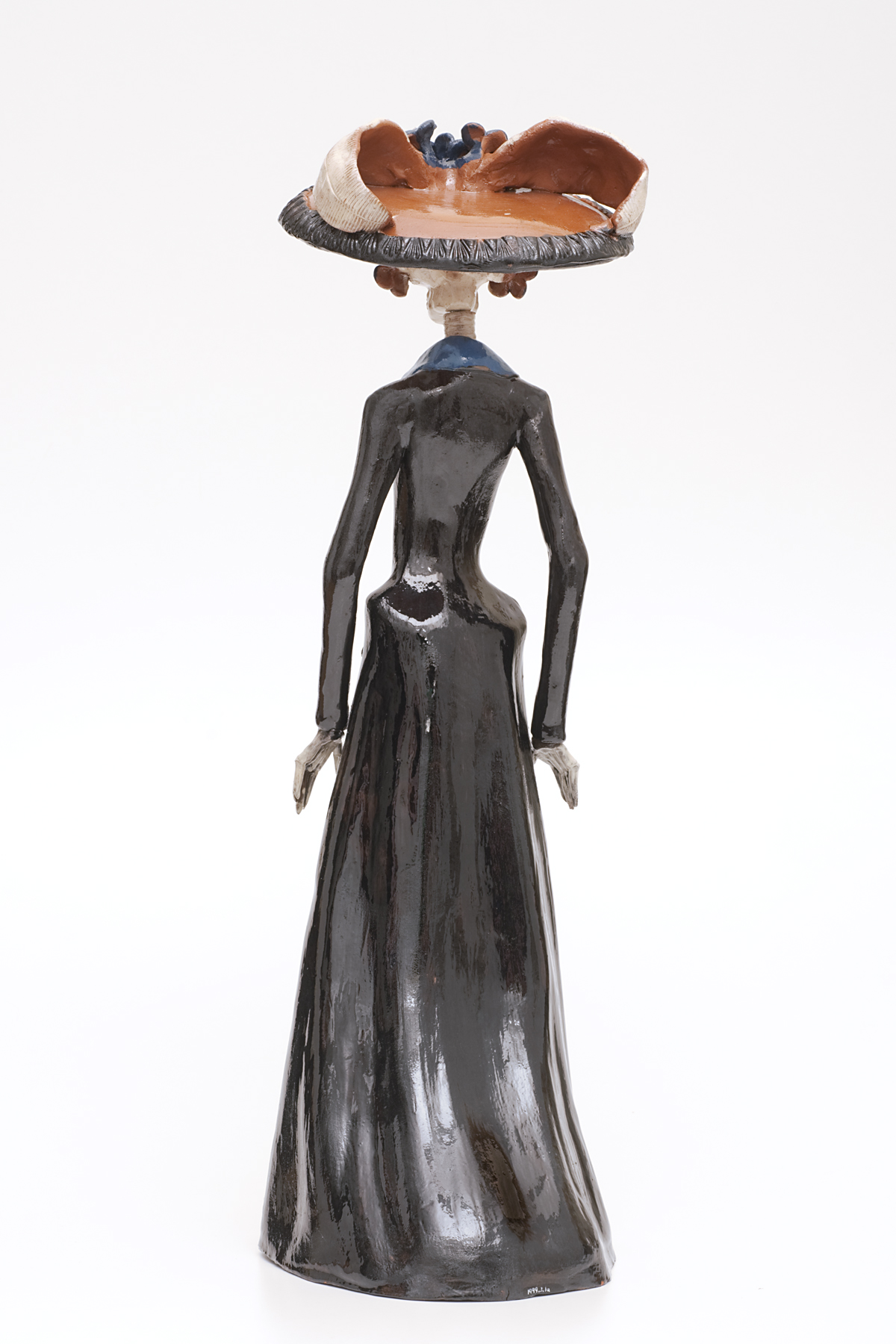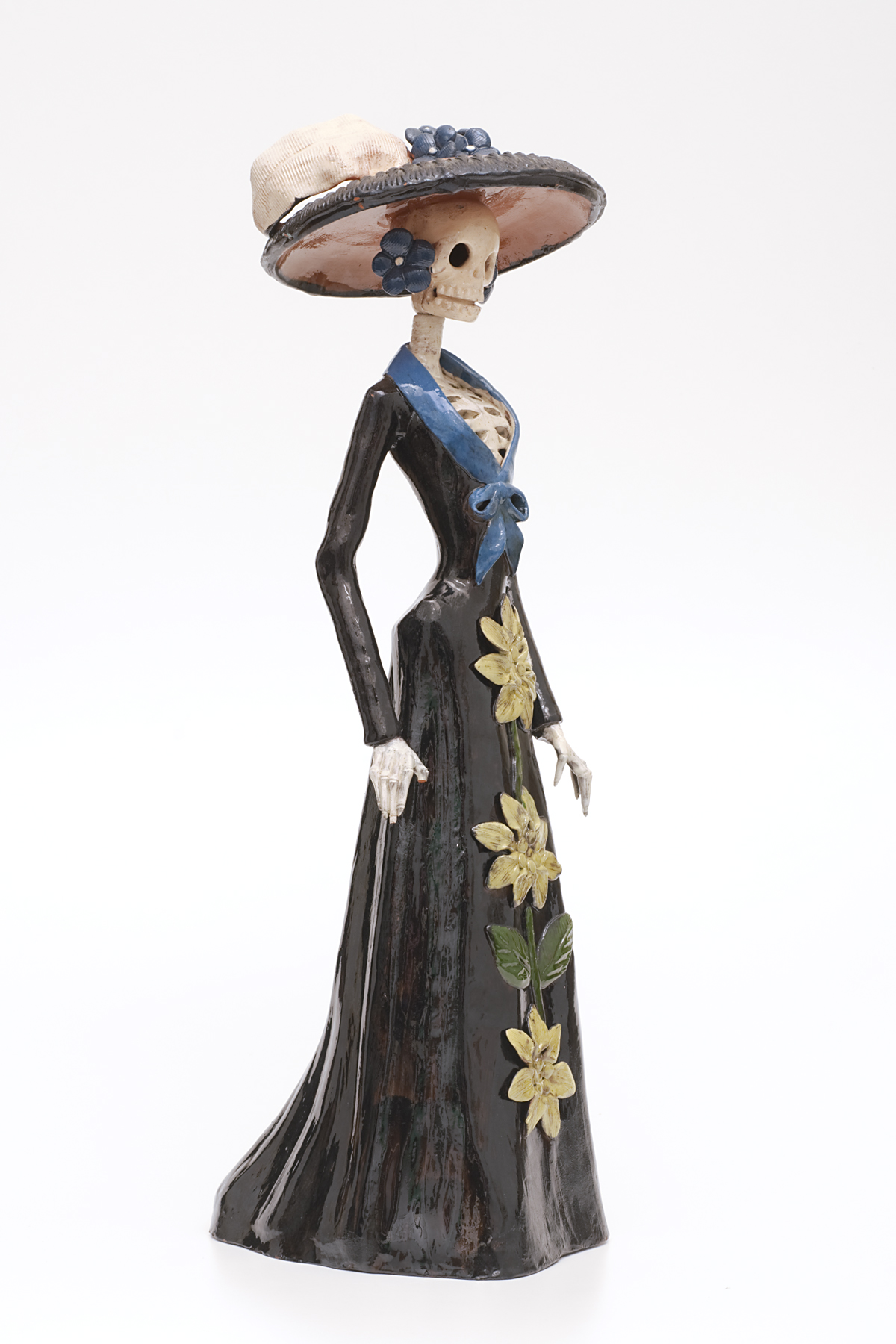Catrina figure, unknown maker from Mexico
Artwork Overview
Catrina figure
, 1998
Where object was made: Chiapas, Mexico
Material/technique: ceramic; glaze; metal
Dimensions:
Object Height/Width/Depth (Height x Width x Depth): 66.5 x 20.5 x 25 cm
Object Height/Width/Depth (Height x Width x Depth): 26 3/16 x 8 1/16 x 9 13/16 in
Object Height/Width/Depth (Height x Width x Depth): 66.5 x 20.5 x 25 cm
Object Height/Width/Depth (Height x Width x Depth): 26 3/16 x 8 1/16 x 9 13/16 in
Credit line: Gift of Lee Mann
Accession number: 2007.1506.a,b
Not on display
If you wish to reproduce this image, please submit an image request









